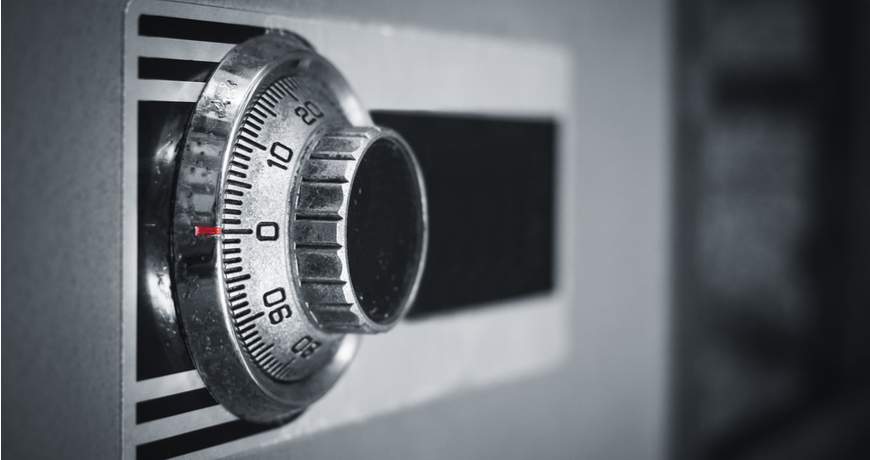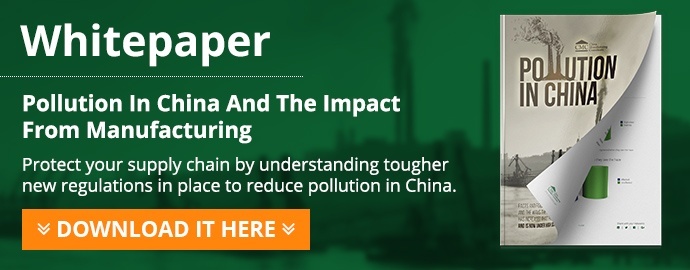This is our third 'pollution in China' article on environmental risks that might prevent production and disrupt your supply chain. In it we’ll study how to mitigate environmental risks in your supply chain.
It all depends on the supplier’s attitude...
In Predicting Painful Factory Closures in China: a Case Study, we gave an example of product made up of 2 components that involve processes which could lead to pollution-related issues.
In Anti-Pollution Inspections In China: 4 Risks Factors, we broke down the reasons why certain factories might suddenly get shut down.
Now let's look in more detail about how a supplier's attitude can affect your supply chain, and how to mitigate environmental risks in your Chinese supply chain based on it:
Situation 1: The assembly plant cooperates and shares information

This is the best-case scenario. Here are the steps to follow to mitigate environmental risks:
First, get all the information you need (see our 2 previous articles on this topic). This way, you will see the risks clearly. If your direct supplier is not organized and has trouble working diligently on this, you can work with a consulting firm or a lawyer.
Second, rank the risks by importance:
- A sub-supplier that rejects many pollutants into the atmosphere or the water, and that owns tools custom-made for your product, is a source of high concern.
- A steel mill from which you purchase a very standard grade of steel, or a carton manufacturer that delivers outer packing to your supplier, represent lower risks. (However, there still needs to be a “plan B” in place.)
Third, set up a corrective action plan for the highest sources of risks and set some targets (result as well as timelines). For example, get a backup factory for the XYZ process up to speed in 3 months, and make sure they comply fully with China’s regulations.
Fourth, follow progress like a hawk. Keep constant pressure. Again, your supplier might not have the manpower necessary to work with the sub-suppliers and to see these improvements through. You might have to provide extra resources to drive this project.
Fifth, as you get results, go down the list of risks (which you might want to re-evaluate every 6 months) and set up new corrective action plans.
Situation 2: Your direct supplier keeps their suppliers as a secret

This quite common. They feel they “own” the supply chain. After all, if all they do is assembly and a bit of light fabrication, you can easily cut them off and bring your business to one of their competitors, who will be able to pick up the work quickly.
If your supplier does not release any information, you have to start working on alternatives. Fortunately, in China there are often 100 similar factories happy to bid on a project!
We explained why you should try to make your suppliers part of the “extended enterprise” in How To Achieve Cost Savings By Partnering With Chinese Factories. This is a great starting point if you want to take this opportunity to get your supply chain to the next level.
The first step is to set up a solid supplier selection process.
Supplier selection must include the most important aspects:
- Quality
- Cost
- Delivery
- Service
- Risk mitigation
- Environmental and social responsibility.
These criteria are simple, and analysis is easily made.
To take the criteria to the next level, your company must also ensure the supplier has the following capabilities:
- Strong process control so that quality improvements and cost savings can be realized;
- R&D that not only understand the specific product they are making but also how that product integrates into your products;
- Open and honest cost and quality charts;
- Openness to change and to have people come to the supplier operation to help make improvements;
- Ability to make engineering, material, or design changes that can help quality and profitability (both internally and for their customer);
- Strong culture of change management;
- Willingness to use operators as well as engineers to make changes;
- Ability to help your company during the design phase.
Obviously, the new supplier(s) might be located outside of China. Don’t limit your options at first – other locations might make sense.
You might have to pay more. Maybe much more. Maybe your business model is no longer workable in these new conditions. In any case, you’d better do this analysis right away and know what the future has in store for you.
So, there you go. This is our general advice on how to mitigate environmental risks. Have you started working on improving or replacing some of the links in your supply chain? How is it going? What is working and what is not?
Share your experiences or questions about environmental concerns' effects on your supply chain, or other manufacturing issues besides, in the comments below and we’ll make sure to respond.





